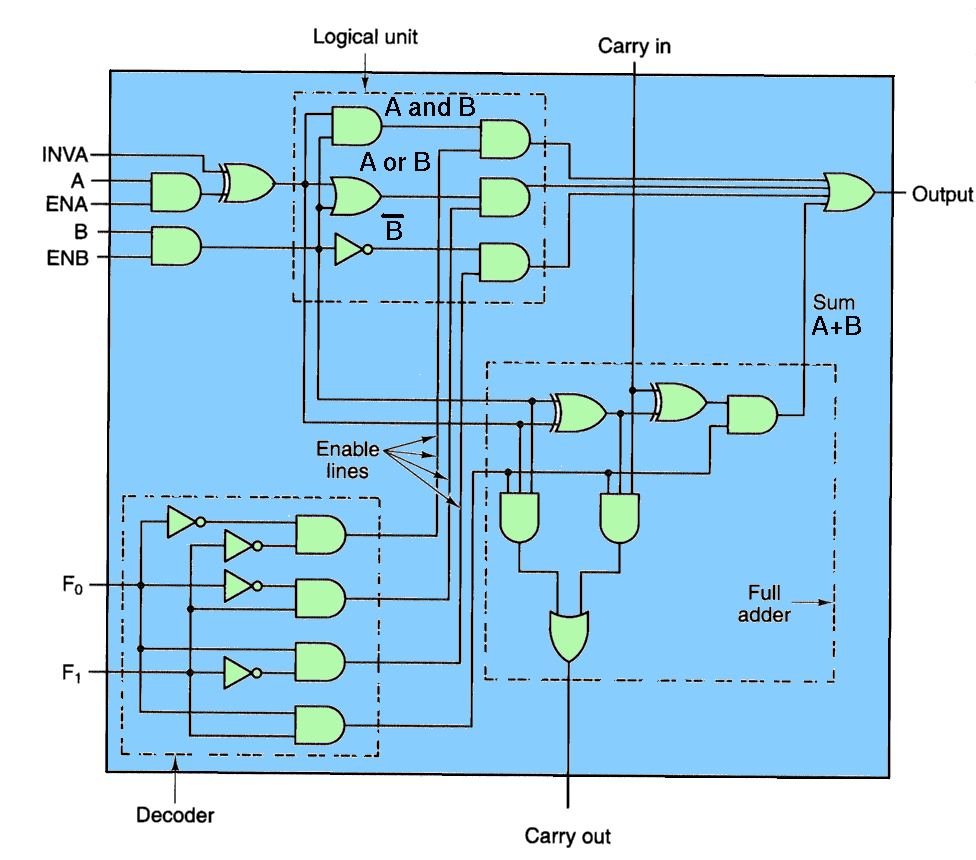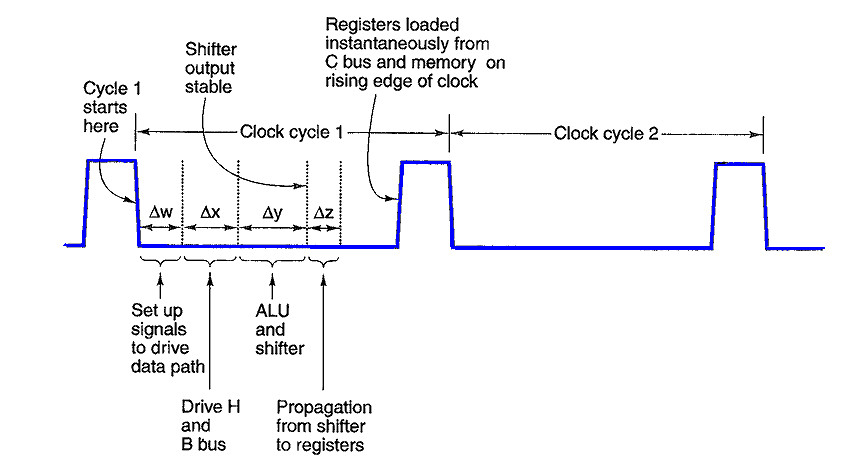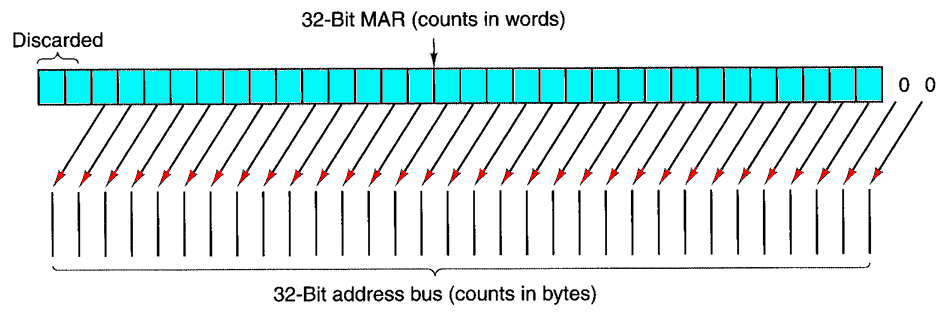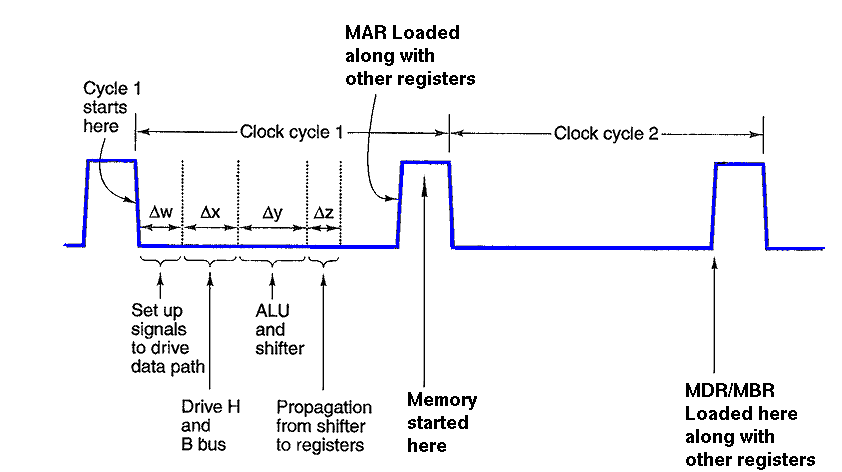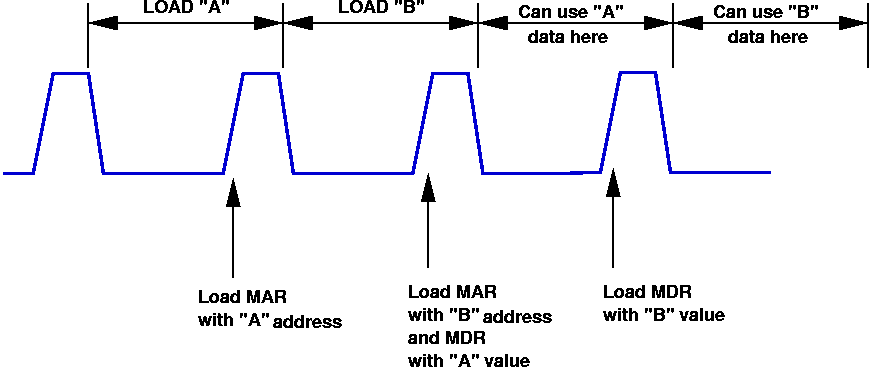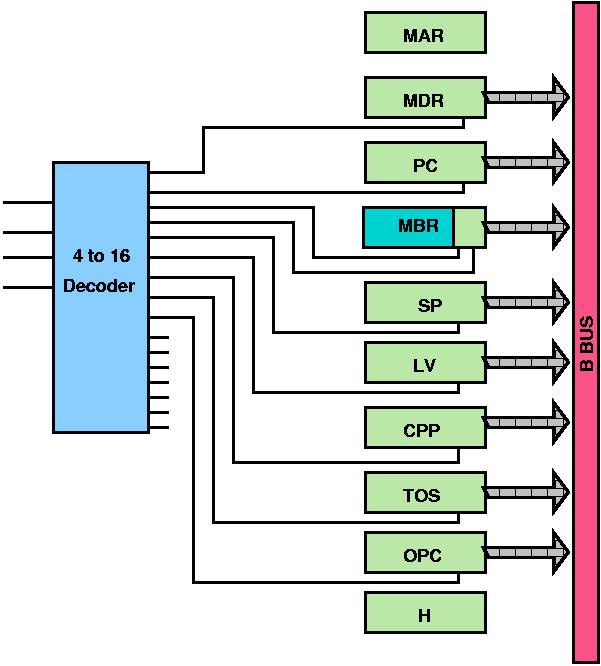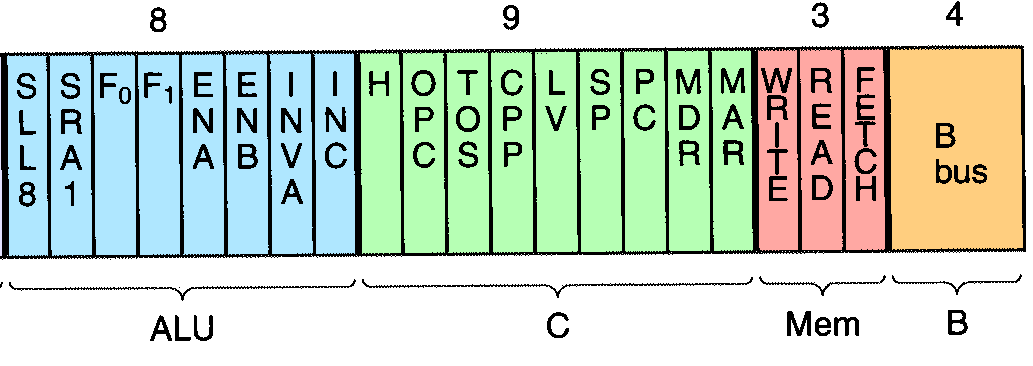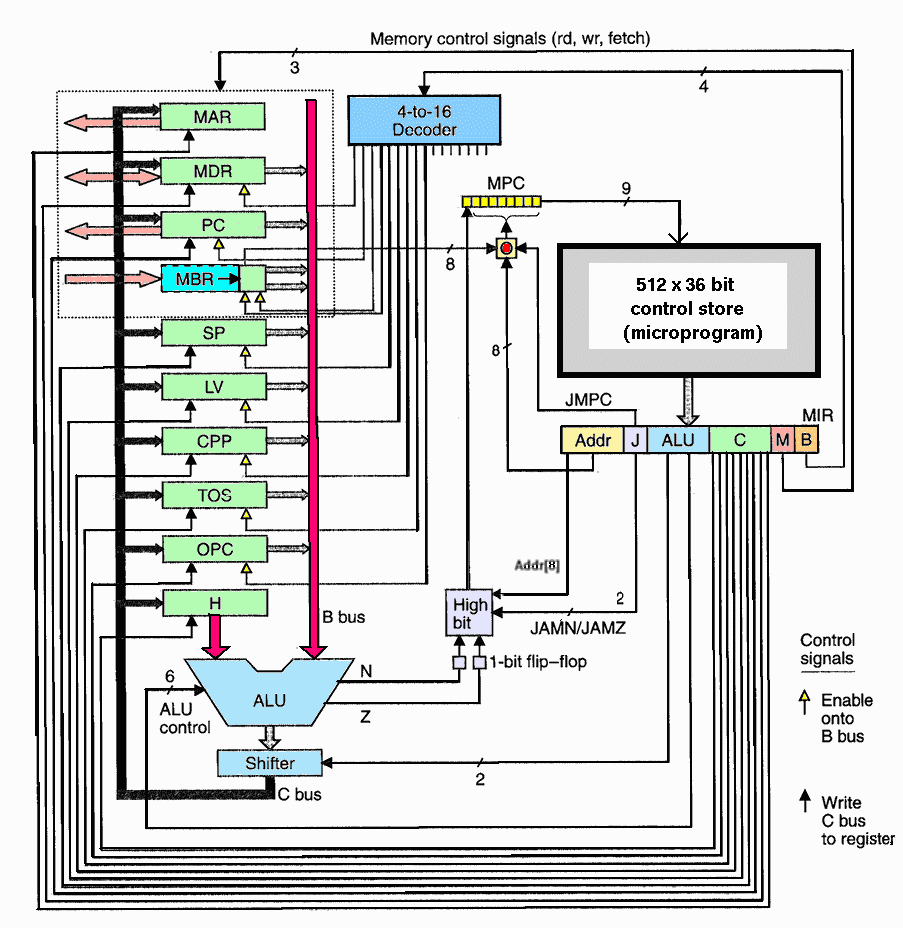- Holding Register (H)is the left ALU input. To load,
you must pass something on B bus through ALU and shifter without
modification and then store it in H.
- Shifter has two control inputs:
- SLL8 - Shift Left Logical, will shift ALU contents
left by one byte, adding zeroes to low order 8 bits.
- SRA1 - Shift Right Arithmetic, shift the ALU contents
one bit to the right, but leaving the most significant byte (the
sign bit) unchanged
- You can read and write the same register on a single
cycle.
- The contents are put on B bus early in cycle
- time is allowed for ALU and Shifter to operate
- then toward the end of the cycle, the edge-triggered
registers will load
|
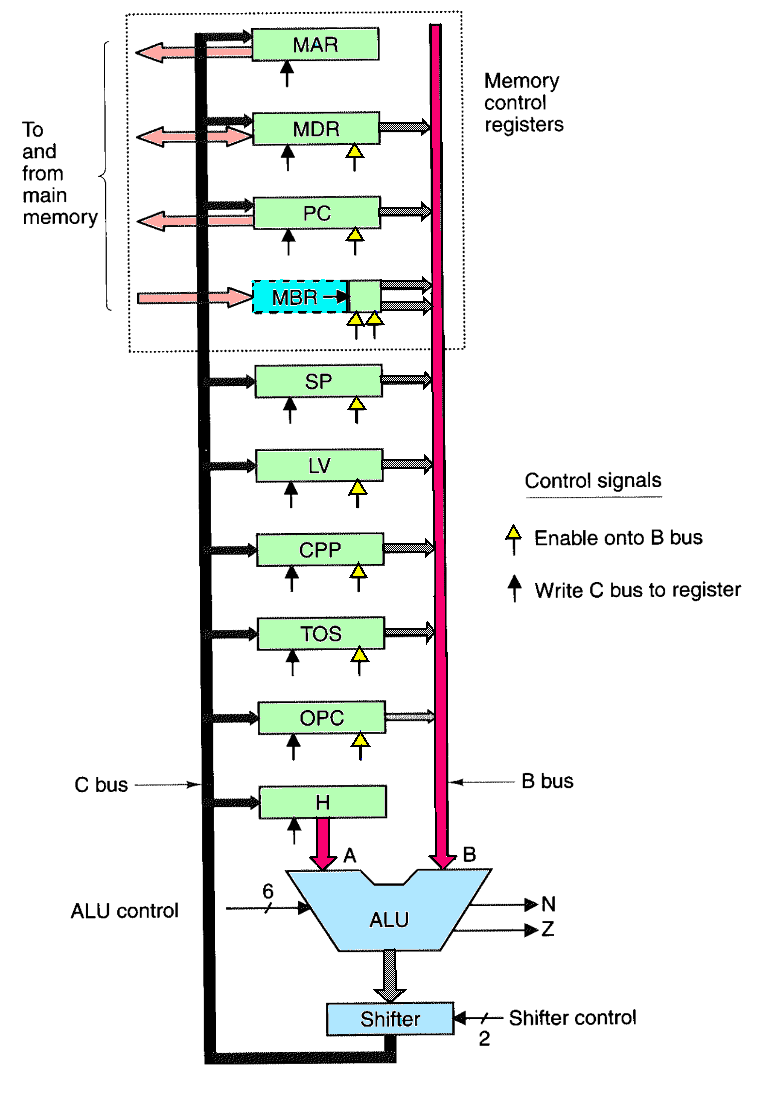
|


